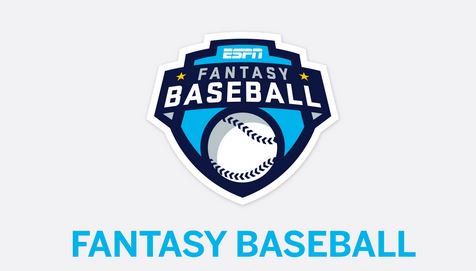Impact of the three-batter rule
The three-batter-minimum rule, instituted during the offseason, hasn’t really been widely discussed in fantasy baseball circles. Is there any takeaway that should influence your 2020 draft planning? While the overall impact of the new rule shouldn’t be too significant, it will probably be noticeable enough to warrant fantasy attention. Specifically, the need for MLB managers to alter their bullpen strategies seems likely to shift the balance of wins and saves, which are 40% of the standard five traditional rotisserie pitching categories.
Consider that the 2019 season saw record lows for starting pitchers both in terms of innings per start (5.18) and the share of the league’s total win pool (only 59.7% of all wins went to starters). More innings and wins went to relievers than ever before — and that’s not entirely the fault of the “opener” strategy. If you remove the near-200 instances that clearly fit that description, starters still averaged fewer than 5⅓ innings per outing, which would still have been a record low.
Now consider that the 2019 season as a whole saw 1,180 saves — only one more than in 2017. That total was the lowest leaguewide since 2000 (1,178). Taking things a step further, 2019 might have been fairly characterized as the Year of the Closer-by-Committee, since there was a sharp decline in what is often called “traditional saves” — ninth-inning three-out appearances fitting the “lead of no more than three runs and pitch at least one inning” specification in the MLB rulebook.
The chart below illustrates the shifting of saves production across different roles over the past three seasons. These account only for ninth-inning save chances, situations where either the home team entered the top of the ninth with a one- to three-run lead and a fresh pitcher beginning that inning, or the road team entering the bottom of that frame with a similar lead and a fresh arm.
Under the new rule, that last column — pitchers who failed to face at least three batters while entering the game in the ninth inning in a save situation — will entirely evaporate. While 75-80 appearances might not amount to much in the grand scheme of things, in conjunction with these other categories the stats suggest that a shift in baseball’s ninth-inning strategy in 2020 is inevitable.
My guess? These numbers revert closer to 2017-18, restoring the traditional one-inning closer strategy, with perhaps five (or more) games per team being impacted. Again, that’s not much, but it’s enough to create little advantages.
Don’t wait until it’s too late! Baseball’s Opening Day is Thursday, March 26. Will you be ready?
Create or join a league today >>
Everything you need to compete >>
Think of teams like the Minnesota Twins and Tampa Bay Rays, kings of the committee-style bullpens. Each had six ninth-inning saves recorded by pitchers who entered mid-inning in 2019, tied for the second most in baseball behind the St. Louis Cardinals (10). Managers Rocco Baldelli and Kevin Cash can no longer freely mix and match in the ninth, and it’s possible that either would be more likely to tab a traditional closer under the new rule. That’s especially important in the example of Taylor Rogers, a pitcher with a limited platoon split of only 21 points over the past two seasons (.240 versus lefties, .261 versus righties). If you’ve been wondering why I’ve been inching both Rogers and Nick Anderson up in my rankings in recent weeks, this is a big reason.
As for wins, the three-batter-minimum requirement could have a similar, albeit less player-specific, impact. The past two seasons saw the greatest number of one- or two-batter outings that ultimately resulted in a win in baseball history, with 106 in 2018 and 104 in 2019. Those numbers won’t shrink to zero, since a wrinkle of the rule is that a pitcher who completes an inning can be freely removed to begin the next frame, regardless of how many batters he has faced. In other words, he could come on in the seventh, record the final out, and then his team could take the lead in the next half-inning. He’d get the win for it, even if he doesn’t return to the mound for the following frame.
Still, as it remains unlikely that starting pitchers will be tasked with pitching that much deeper into games while relievers will be asked to shoulder greater chores within individual outings, those capable of going multiple frames should enjoy a small bump in win potential.
That’s going to benefit relievers who typically go 1⅓-plus innings per outing, like Josh Hader, Seth Lugo, Junior Guerra, Robert Gsellman and Robert Stephenson. Hader, as the probable closer for the Milwaukee Brewers, enjoys a dual benefit. It would be a wise strategy to save a roster spot or two for a “workhorse”-type reliever, considering the slightly enhanced potential in the wins column (in addition to their typical contributions in terms of ERA, WHIP and strikeouts).
Finally, it makes sense to identify the players whose values might suffer as a result of the new rule. We’re talking the specialist types, those whom teams utilized to face hitters only of the same handedness. They’ll take a dual hit, as the new rule will likely force them to face an increased number of matchups against hitters who bat from the opposite side. Additionally, they might not get the call as often as managers strategize around pitchers with more balanced splits.
Here are 20 pitchers whose wOBA splits over the past three seasons suggest they could suffer a small drop in fantasy value under the new rule:
wOBA splits are in percentage points, so a 137 point split means that the pitcher’s wOBA against righties (left 10 names) is 137 points lower than against lefties. The right 10 names have lower splits against lefties than righties.
